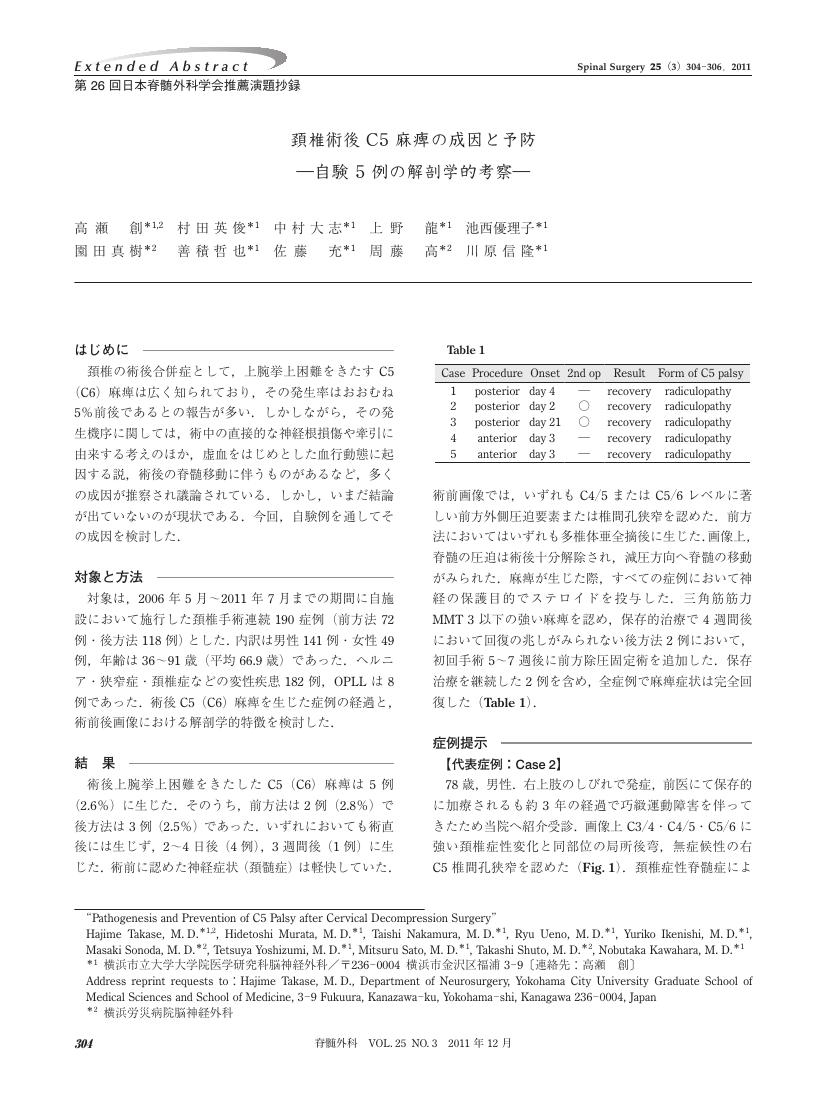25 0 0 0 OA 形状の異なる計量スプーンの精度の比較
- 著者
- 伊藤 知子 上野 龍司
- 出版者
- 日本調理科学会
- 雑誌
- 日本調理科学会大会研究発表要旨集 平成24年度日本調理科学会大会
- 巻号頁・発行日
- pp.113, 2012 (Released:2012-09-24)
【目的】計量は調理の基本操作であり、特に塩分制限食など治療食の調理において計量操作の持つ意味は大きい。家庭においては、計量には計量カップ、計量スプーンなど、容積を測定する器具が用いられることが多いと考えられるが、市販されているそれらの形状は様々であり、精度についても不明である。これらは計量法で定められている「ます」ではないため検定検査の対象とはならないが、その測定値について一定以上の再現性は必要である。本研究では計量スプーンに着目し、形状の異なる計量スプーンの精度の比較を行った。【方法】計量スプーン(大さじおよび小さじ)12種について、その長径、短径、深さを測定した。これらの計量スプーンを用いて、水、小麦粉、塩、サラダ油等を測り取り、その重量を測定し、比較した。さらに「標準計量カップ・スプーンによる重量表(g)」(以下、重量表)の値との比較を行った。【結果】最初に大学生12名を被験者とし、2種類の計量スプーンを用いて、水・小麦粉を測りとってもらい、その重量を測定した。大さじを用いて測定した場合に有意差が見られた。次に計量スプーン12種を用いて様々な試料を測り取って重量を測定したところ、その値は有意に異なることが明らかとなった。特に半径(短径)よりも深さの値が小さい浅型の計量スプーンの測定値は、重量表の値の80%未満であった。浅型のものを除いた8種の計量スプーンの測定値を比較したところ、粒形状の試料よりも液状の試料の方が測定値のばらつきが大きかった。家庭における少人数用の治療食の調理や、味の再現性を重視する場合においては、少量の調味料の計量における計量誤差を小さくする計量方法の習得が必要であると考えられる。
4 0 0 0 OA 姶良カルデラ妻屋火砕流堆積物の特徴,噴出量と給源
- 著者
- 上野 龍之
- 出版者
- 特定非営利活動法人日本火山学会
- 雑誌
- 火山 (ISSN:04534360)
- 巻号頁・発行日
- vol.61, no.3, pp.533-544, 2016-09-30 (Released:2016-11-08)
- 参考文献数
- 26
The Tsumaya pyroclastic flow deposit is one of the main units of the Aira pyroclastic eruption, which produced the Aira caldera in Southern Kyushu, Japan, 30,000 years ago. The Tsumaya deposit overlies the main plinian unit, the Osumi pumice fall deposit, and is covered by the large-volume pyroclastic flow unit, the Ito pyroclastic flow deposit. The Tsumaya deposit consists of massive facies associated with smaller volume of stratified facies. The total eruption mass is 2.8×1013 kg (estimated by the crystal method), of which approximately 48 % was elutriated to a co-ignimbrite ash fall. The upper part of the Osumi pumice fall deposit is intercalated with the stratified facies of the Tsumaya pyroclastic flow deposit, indicating that the Tsumaya eruption began during the final phase of the Osumi eruption. The Tarumizu pyroclastic flow and the Osumi pumice fall were produced from the same vent in the southern part of the caldera. The Tsumaya pyroclastic flow deposit has been considered to be the same stratigraphic unit as the Tarumizu deposit;however, the two deposits have contrasting origins and different contents of lithic fragments, indicating they were erupted from different vents. Lateral variations in the altitudes of the depositional surface of the Tsumaya deposit indicate that the Tsumaya pyroclastic flow was erupted from the northeastern part of the Aira caldera.
2 0 0 0 OA 頚椎術後C5麻痺の成因と予防
2 0 0 0 OA 直達手術を施行した脳幹海綿状血管腫5例の検討
- 著者
- 田中 貴大 周藤 高 末永 潤 高瀬 創 佐藤 充 大竹 誠 立石 健祐 上野 龍 宮崎 良平 村田 英俊
- 出版者
- 一般社団法人 日本脳卒中の外科学会
- 雑誌
- 脳卒中の外科 (ISSN:09145508)
- 巻号頁・発行日
- vol.46, no.1, pp.58-64, 2018 (Released:2018-02-14)
- 参考文献数
- 17
We report herein five cases of symptomatic brainstem cavernous malformations (CM). Specific surgical approaches were designed to directly access each lesion. Neuronavigation and intraoperative monitoring were used. Four lesions underwent gross total resection, and one was subtotally partially removed. None of the patients developed new neurological deficits and all cases showed an improvement based on the modified Rankin Scale and the Karnofsky Performance Status. Although brainstem CM have a relatively high rate of re-bleeding, thus adversely affecting the neurological status of the patient, recent reports have demonstrated favorable outcomes after their resection. Hence, surgical removal can be recommended for cases of symptomatic brainstem CM, particularly those with re-bleeding. An optimal surgical approach, providing direct access to the lesion, is critical for successfully resecting brainstem CM.
- 著者
- 大野 希一 山川 修治 大石 雅之 高橋 康 上野 龍之 井田 貴史
- 出版者
- 特定非営利活動法人日本火山学会
- 雑誌
- 火山 (ISSN:04534360)
- 巻号頁・発行日
- vol.50, no.6, pp.535-554, 2005-12-30
- 被引用文献数
- 1
A cloud height generated by a volcanic eruption reflects the immensity and/or magnitude of the eruption; thus a measuring of the height's temporal variation during the event is very significant in judging whether the activity will become violent or decline. However, when a volcanic eruption occurs during bad weather, we must take information about the cloud's height by means of the pyroclastic deposits. In general, the total time taken for pyroclastic materials to be ejected and deposited at a given distance from the source vent can be divided into three parts as follows : the time for the eruption cloud to ascend and reach its neutral buoyancy level (T_1); the time for the pyroclastic materials to be transported laterally by the eruption cloud (T_2); and the time for pyroclastic materials to fall and be deposited on the ground (T_3). Since T_3 can be calculated from the settling velocity of pyroclastic materials, if the time that the pyroclastic materials fell at a given locality was observed and a given value for T_1 is assumed, the most suitable wind velocity to explain T_2 can be determined. Thus the height at which pyroclastic materials separate from the eruption cloud can be determined by using the vertical profile of wind velocity around the volcano. These ideas were applied to the eruption occurred at 19:44 (JST) on September 23, 2004, at the Asama volcano, which produced a pyroclastic fall deposit with a minimum weight of 7.2×10^6kg. Because this eruption occurred in bad weather, the pyroclastic materials fell as mud raindrops that were aggregate particles saturated by the rainwater. Based on the depositional mass, the number of impact marks of the mud raindrops in the unit area, and the apparent density and the equivalent diameter of these drops during their fall was estimated to be 2.2-3.1mm, which is consistent with the grain-size distribution of pyroclastic materials. According to some experienced accounts, mud raindrops several millimeters in diameter fell at 20:03 in the Kitakaruizawa area (about 9km north-northeast from the source). Assuming 2-5 minutes for T_1 and 11.5-12.0m/s of average lateral wind velocity, the height at which the mud raindrops separated from the eruption cloud can be estimated at 3,430-3,860m (3,610m on average). From this conclusion, the transportation and depositional process of the pyroclastic materials generated on September 23, 2004, at the Asama volcano can summarized as follows : the explosion occurred at 19:44 and the eruption cloud rose to 3,610m while blowing 2.49km downwind from the source. The cloud moved laterally for 4.51km with generating raindrops. At 19:54, mud raindrops separated from the cloud 7.0km north-northeast from the source, then fell to the ground at 20:03 after being blown 2.0km downwind by a lateral wind.
1 0 0 0 形状の異なる計量スプーンの精度の比較
- 著者
- 伊藤 知子 上野 龍司
- 出版者
- 日本調理科学会
- 雑誌
- 日本調理科学会大会研究発表要旨集
- 巻号頁・発行日
- vol.24, 2012
【目的】計量は調理の基本操作であり、特に塩分制限食など治療食の調理において計量操作の持つ意味は大きい。家庭においては、計量には計量カップ、計量スプーンなど、容積を測定する器具が用いられることが多いと考えられるが、市販されているそれらの形状は様々であり、精度についても不明である。これらは計量法で定められている「ます」ではないため検定検査の対象とはならないが、その測定値について一定以上の再現性は必要である。本研究では計量スプーンに着目し、形状の異なる計量スプーンの精度の比較を行った。<br>【方法】計量スプーン(大さじおよび小さじ)12種について、その長径、短径、深さを測定した。これらの計量スプーンを用いて、水、小麦粉、塩、サラダ油等を測り取り、その重量を測定し、比較した。さらに「標準計量カップ・スプーンによる重量表(g)」(以下、重量表)の値との比較を行った。<br>【結果】最初に大学生12名を被験者とし、2種類の計量スプーンを用いて、水・小麦粉を測りとってもらい、その重量を測定した。大さじを用いて測定した場合に有意差が見られた。次に計量スプーン12種を用いて様々な試料を測り取って重量を測定したところ、その値は有意に異なることが明らかとなった。特に半径(短径)よりも深さの値が小さい浅型の計量スプーンの測定値は、重量表の値の80%未満であった。浅型のものを除いた8種の計量スプーンの測定値を比較したところ、粒形状の試料よりも液状の試料の方が測定値のばらつきが大きかった。家庭における少人数用の治療食の調理や、味の再現性を重視する場合においては、少量の調味料の計量における計量誤差を小さくする計量方法の習得が必要であると考えられる。

